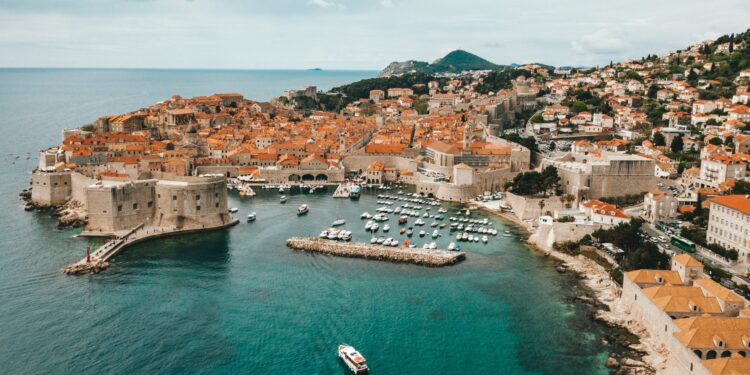Rising from the turquoise Adriatic, Dubrovnik is Croatia’s most enchanting city—walled, sun-soaked, and alive with history. Known as the “Pearl of the Adriatic”, it attracts visitors for its medieval charm, cinematic beauty, and easy blend of culture, sea, and gastronomy. For those making a short visit, a few days here can feel like stepping into another era.
The old city
Dubrovnik’s Old Town, a UNESCO World Heritage site, is its beating heart. Enclosed by massive 16th-century stone walls, it invites exploration on foot: marble alleys, Renaissance palaces, baroque churches, and hidden courtyards filled with café chatter. The main street, Stradun, glows in the evening light and leads to landmarks such as Onofrio’s Fountain and the Rector’s Palace. Early mornings are quiet, while evenings bring a lively buzz of locals, musicians, and visitors from cruise ships and ferries.
What to see in a day
The city walls are a must. A walk around them—roughly two kilometres—offers sweeping sea views and a perfect sense of Dubrovnik’s scale. The cable car to Mount Srđ gives a panoramic view of the walled city and nearby islands, best enjoyed at sunset. Game of Thrones fans can join short filming-location tours, though even without knowing the series, the fortress views are unforgettable.
Food and atmosphere
Seafood dominates Dubrovnik’s cuisine, with grilled octopus, black risotto, and Adriatic tuna appearing on most menus. For a casual lunch, small konobas (taverns) serve local wines and simple Dalmatian dishes; for a finer evening, restaurants like 360° or Nautika offer terraces overlooking the sea walls. Prices are higher than elsewhere in Croatia, but the experience is world-class.
Quick escapes nearby
Lokrum Island lies just a 15-minute ferry ride from the Old Port—perfect for a few hours of swimming, shade, and botanical gardens. The Elaphiti Islands, reached by short boat trips, offer sandy beaches and slower rhythms. Those staying longer can drive the coastal road toward Cavtat or Montenegro, where quieter bays and small fishing towns still feel untouched.
When to go
Spring and early autumn (April–June and September–October) bring warm weather without the crowds or heat of July and August. The city is compact, so walking shoes, light clothes, and plenty of water are essential.
The essence of Dubrovnik
Dubrovnik’s charm lies not only in its beauty but in its endurance—centuries of storms, wars, and visitors have passed, yet the city stands proud, polished and peaceful. For a short visit, it offers a complete escape: sea, stone, and serenity in perfect balance.
Newshub Editorial in Europe – October 29 2025



Recent Comments